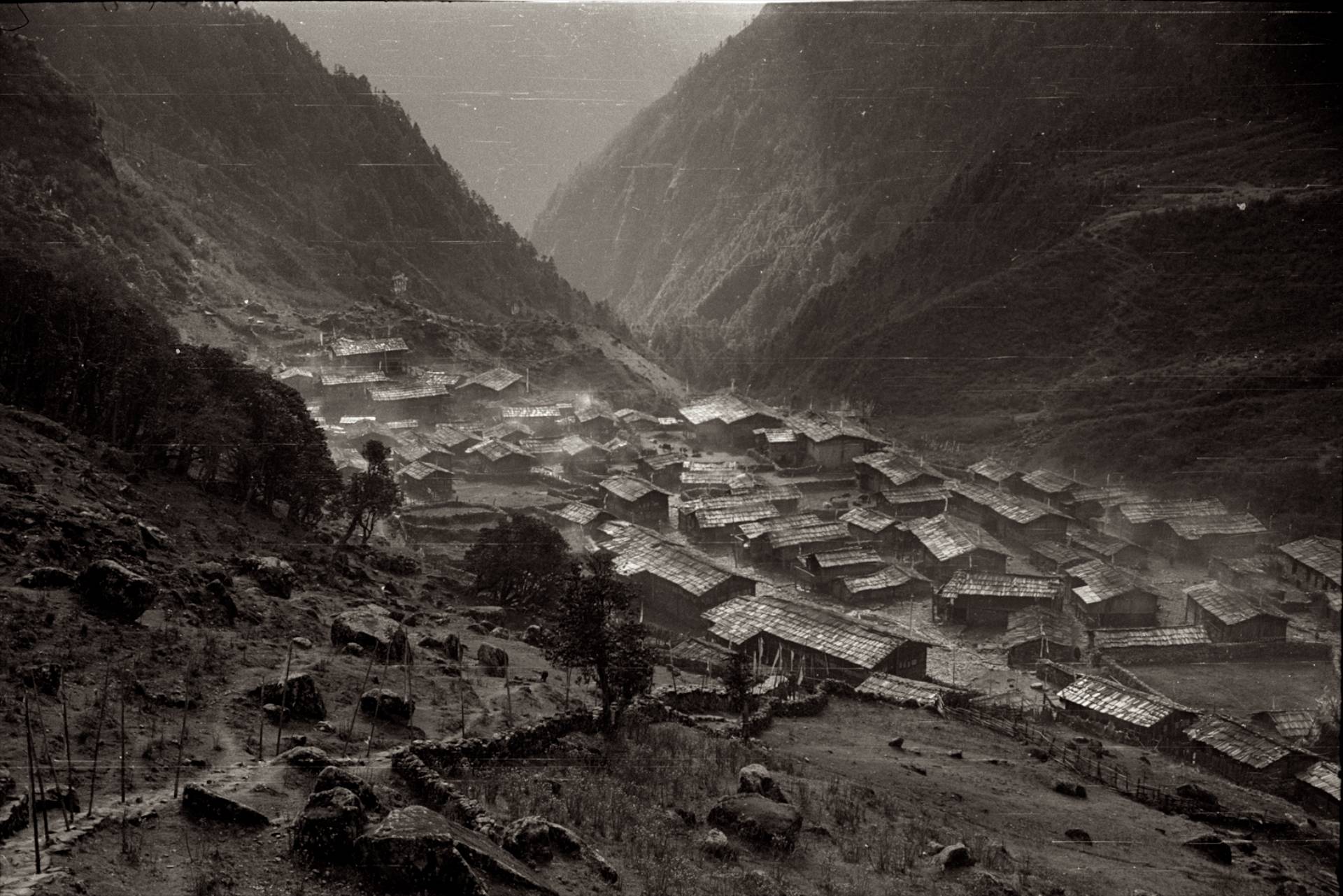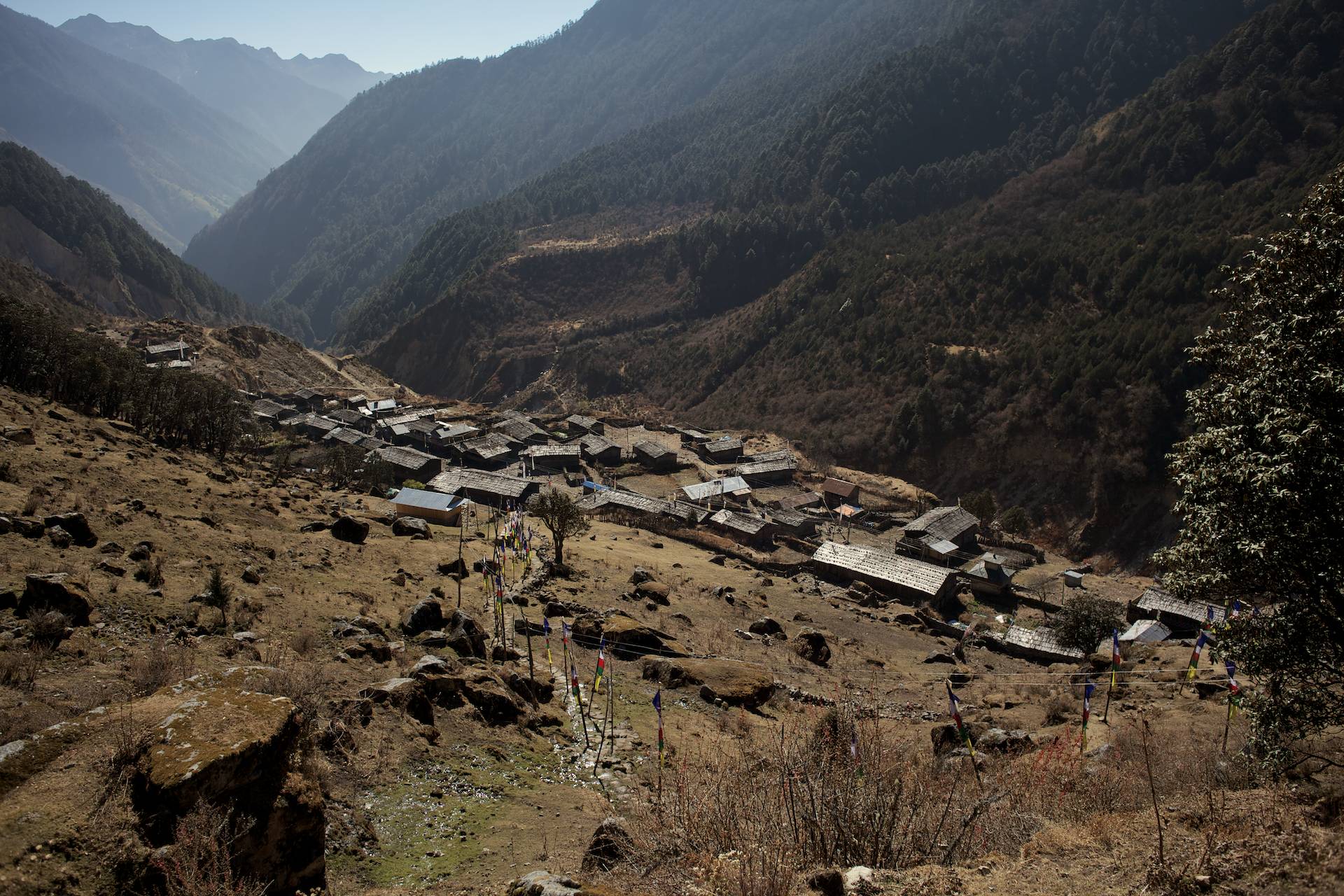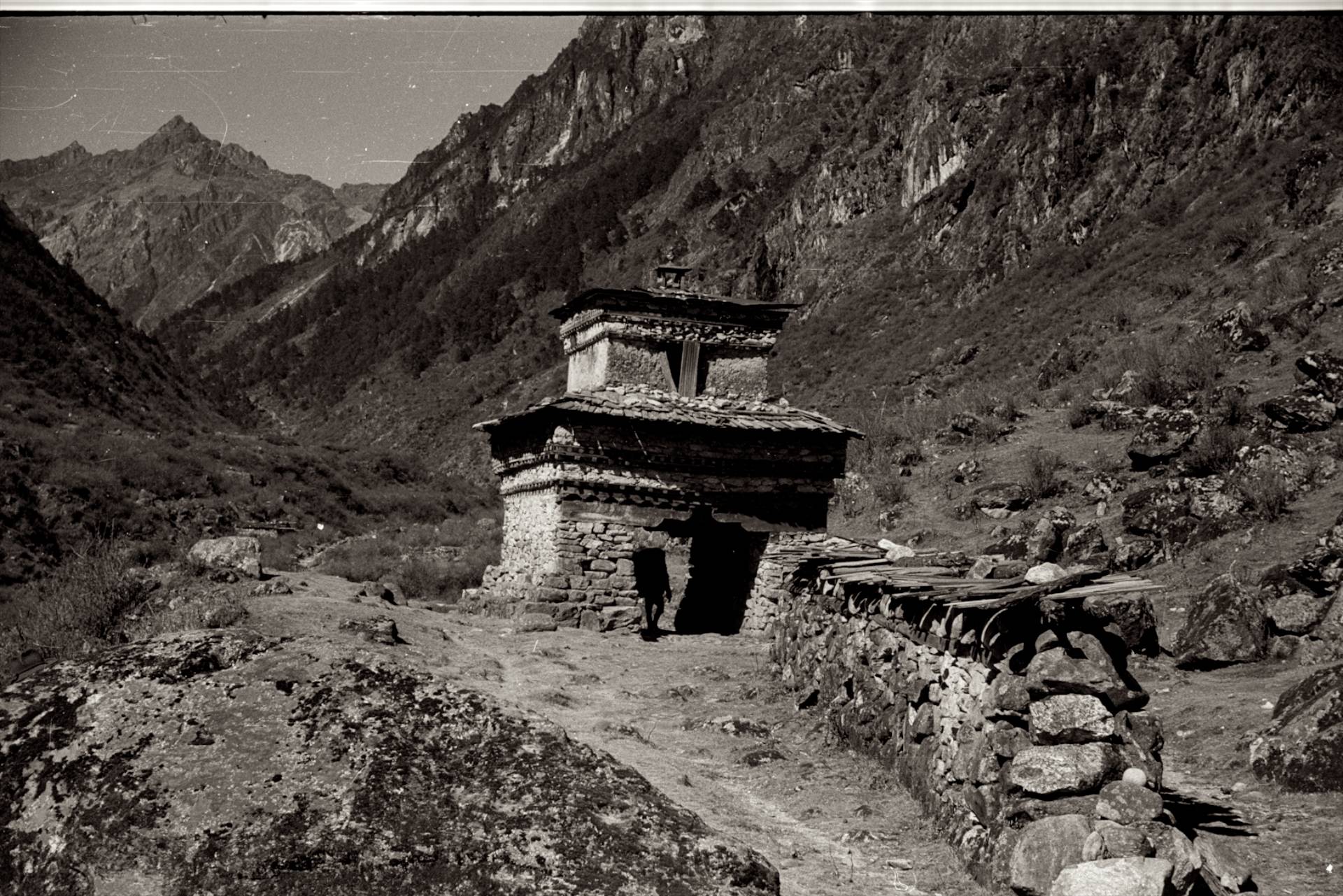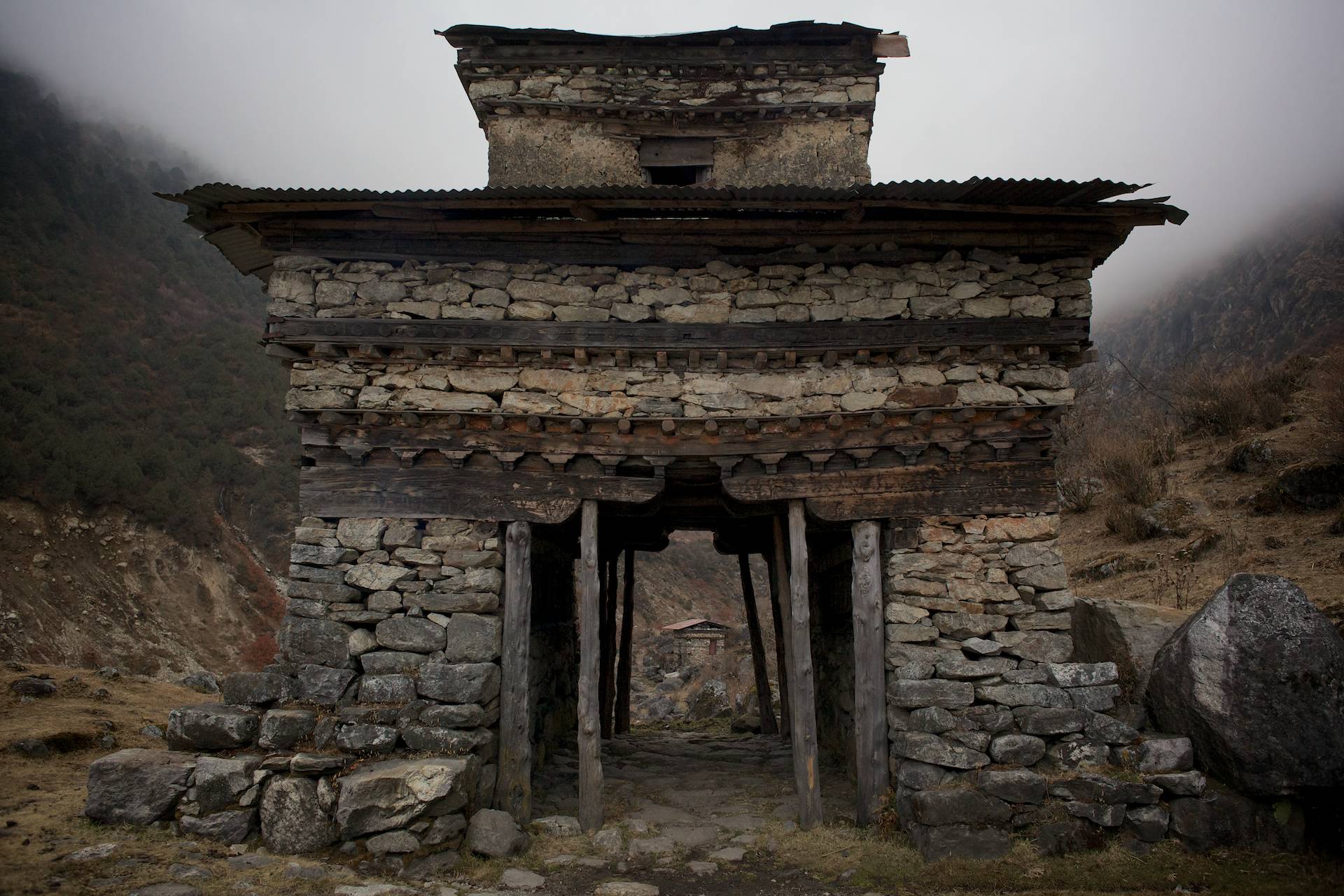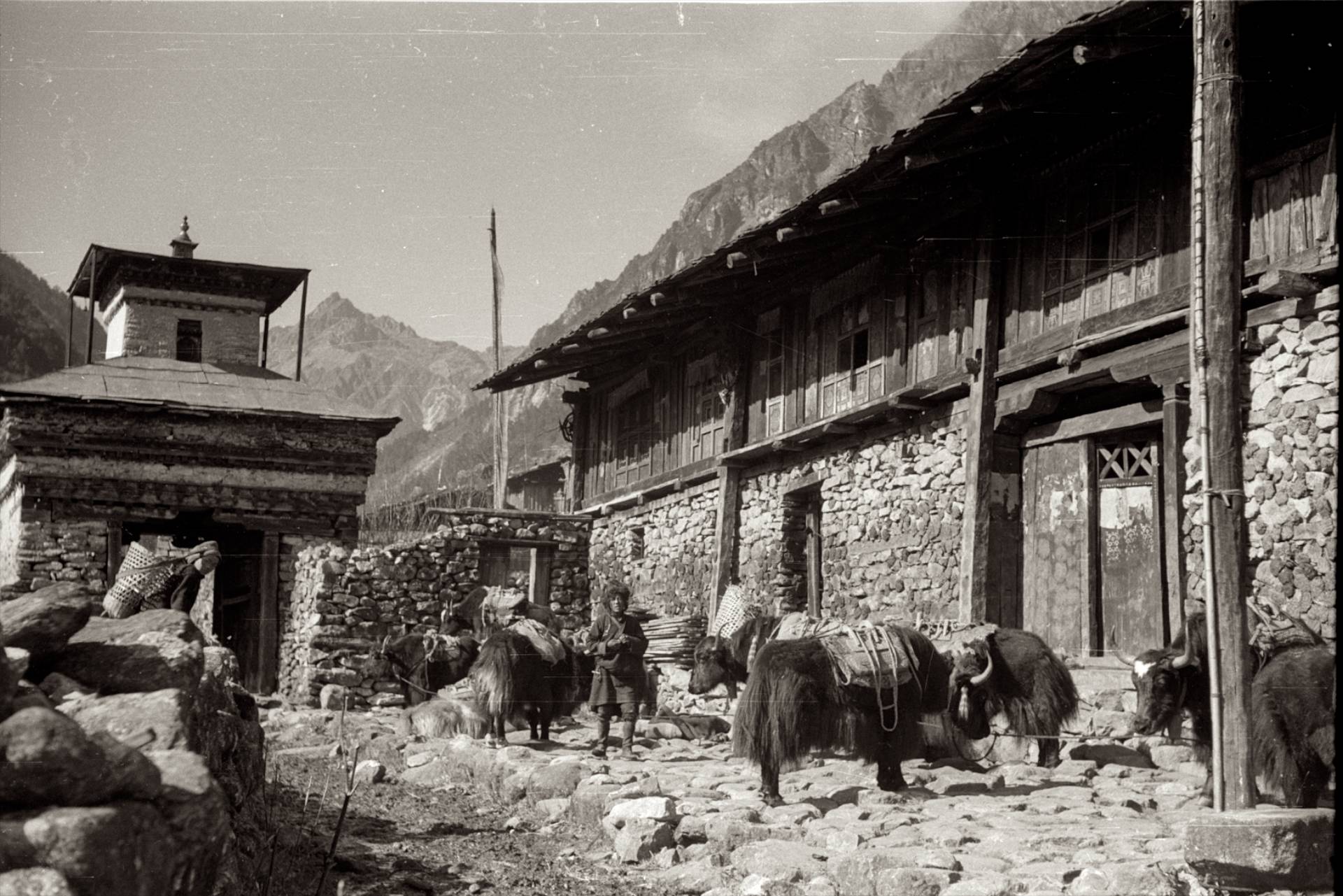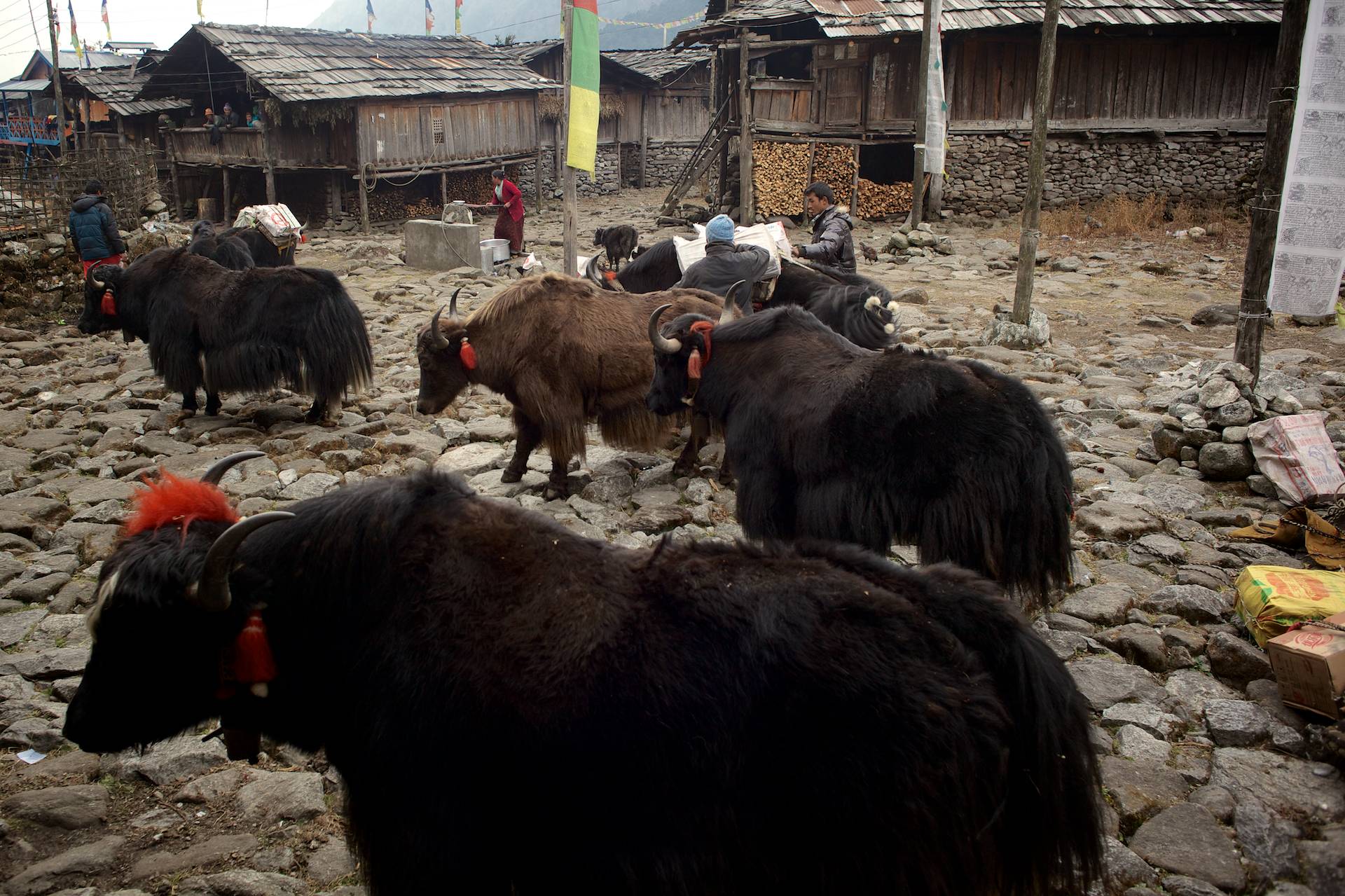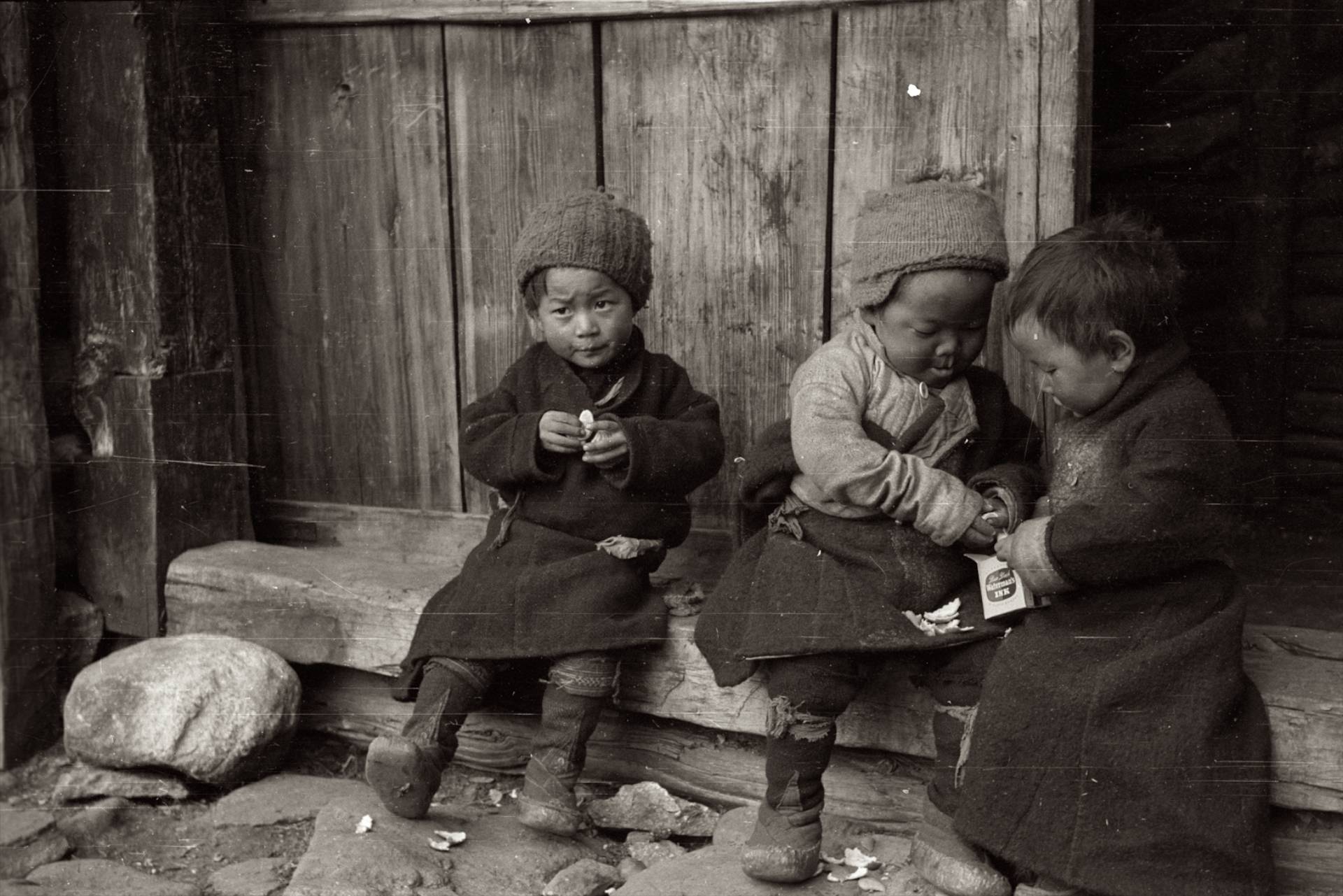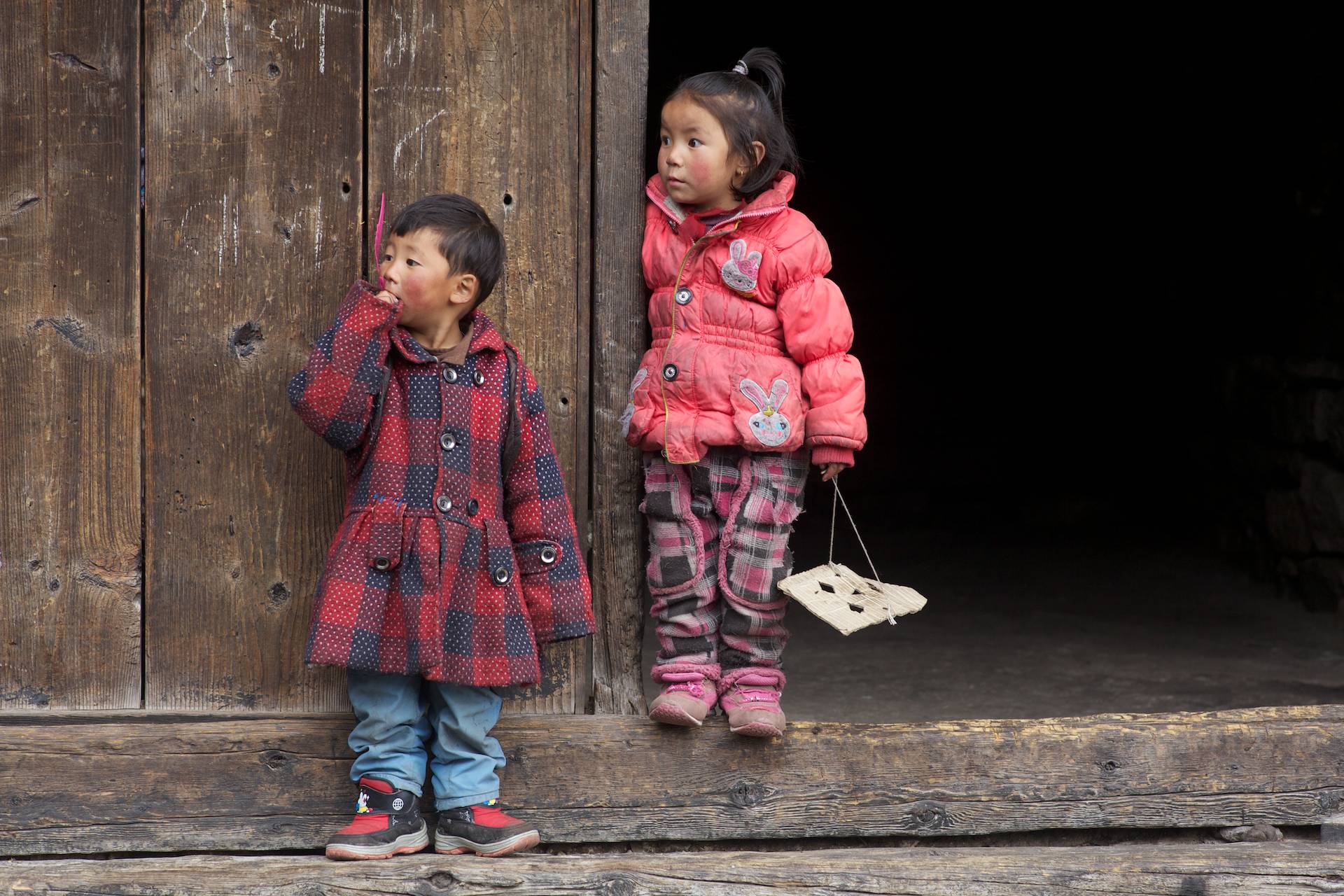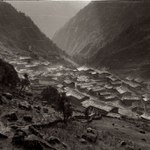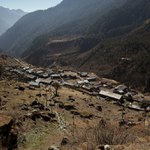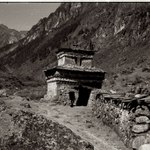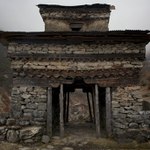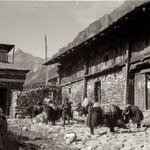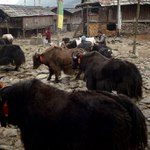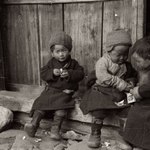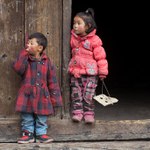Arrivals, Then and Now
Christoph von Fürer-Haimendorf took these black-and-white photographs during his visit to Walung at the end of November 1957. Walung is smaller now than it used to be. In 1962, a flash flood eroded the high river bank on which the village is located, and over the following years almost half of the houses were taken away by landslides.
Otherwise, however, comparing Haimendorf’s images to my own taken in November 2012 reveals striking similarities. It is almost as if the political, economic, and social transformations of the past fifty-five years had not left any traces. The large two-storey houses, the wooden roofs, the gate that marks the northern entry to the village, and the spacious cobblestone forecourts where the yak caravans coming down from Tibet are unloaded – all of this has hardly changed at all.
Only when I was back in Kathmandu did I notice how closely my own images mirror these historical photographs. Pondering over the absence of visible change so uncommon in fast-moving Asia, I think that these images depict the scene and setting of a repeating event that has remained at the core of everyday life in this trading village: a caravan comes back from Tibet, goods are offloaded and stored in the ground floor of the house, children are told to step back and mind the yaks. Full of anticipation they stand in the doorways, eagerly waiting for the presents their fathers bring. Stories and things of the world out there arrive at their doorsteps – a foretaste of the adult lives of constant movement so characteristic for these remote yet cosmopolitan pathways across the Himalayas.
(Haimendorf photographs courtesy of SOAS Digital Archives & Special Collections, requisition numbers: PPMS19_6_BHOT_0018, 0019, 0027 and 0002, © SOAS/Nicholas Haimendorf, published under a Creative Commons Attribution-NonCommercial-NoDerivatives License)
Privacy Policy
Plain and simple: I take the principle of minimal data collection serious and try hard not to collect or process any personal data beyond the basics required to serve and maintain the website.
Specifically,
- We do not use cookies.
- We do not use third party analytics.
- There is no contact form that would allow you to enter personal data.
- We do not use advertising to run this website.
In order to serve this website, your IP address and information about your browser, operating system and screen resolution need to be collected and processed. theotherimage.com is a simple, handcrafted, static website hosted by Netlify. It uses fonts by Adobe Fonts (formerly Typekit). Both Netlify and Adobe automatically collect usage data, either generated by the use of this website or from the service infrastructure itself. This data is used for accounting and analytic purposes as well as for technical maintenance by these two companies. Neither Netlify nor Adobe use cookies to track you. Specifics can be found in their respective privacy policies.
The videos on this website are hosted by Vimeo. Depending on your browser configuration, Vimeo may use cookies and other tracking technologies as stated in their respective privacy policies.
If you have any questions about this privacy policy, please write to: Martin Saxer, LMU Munich, Department of Social and Cultural Anthropology, Oettingenstr. 67, 80538 Munich, Germany.
This privacy policy has been updated on 30 December 2018.
![[ the other image ]](/images/logo/toi-logo_2x.png)
